Ho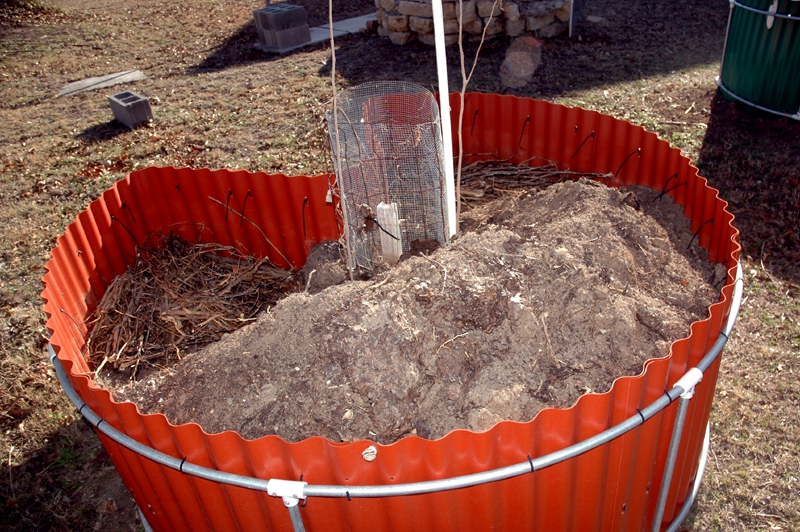 t start in the new year? Weather-wise, it is. This winter has been warm in Central Texas compared to most, which has made preparing to garden in the spring a daunting experience. It’s looking like spring already (this is being penned on March 14), so the urge to plant and take advantage of this nice weather has been enormous. However, I still remember the recent Easter snow. So it’s chancy.
t start in the new year? Weather-wise, it is. This winter has been warm in Central Texas compared to most, which has made preparing to garden in the spring a daunting experience. It’s looking like spring already (this is being penned on March 14), so the urge to plant and take advantage of this nice weather has been enormous. However, I still remember the recent Easter snow. So it’s chancy.
 Normally when I get ready for the season I turn over the top foot of soil and build the approximate 10-inch drop in level from the previous year with new content (topsoil, compost, some leaves, etc.), but this year I decided to dig deeper in all the keyhole gardens except one. On these, I put in new cardboard, twigs, leaves, and other matter, almost like building from scratch.
Normally when I get ready for the season I turn over the top foot of soil and build the approximate 10-inch drop in level from the previous year with new content (topsoil, compost, some leaves, etc.), but this year I decided to dig deeper in all the keyhole gardens except one. On these, I put in new cardboard, twigs, leaves, and other matter, almost like building from scratch.
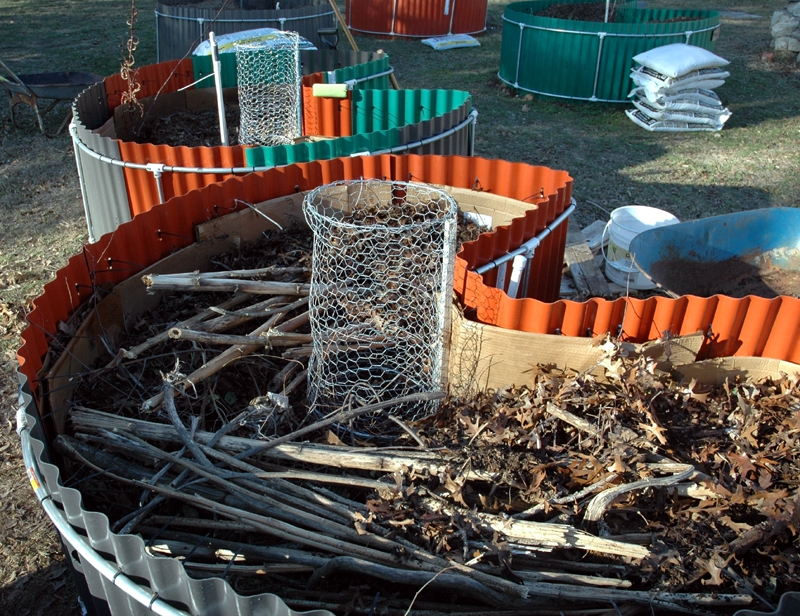 We also added two new keyholes which now makes seven in all at our experiment location in Clifton, Texas. We made some nameplates for each garden: “Bubba,” the original cinder block and rock garden; “Alicia,” a red brick garden, our first from a kit that was put in several years ago, named after one of my grandmothers; “Belle,” a forest green garden; “Pac-Plant,” a red brick one resembling Pacman; “Key-Rex,” our dinosaur gray garden; and newbies “Dipzoid,” made of all three colors (a few of our spare parts) like a zoid (triangles and circles) dipped in different colors; and “The Holy Cow,” a two-tone garden with holes cut in one of the sides to experiment with plants coming out the side. It reminds me of a spotted cow grazing in the yard.
We also added two new keyholes which now makes seven in all at our experiment location in Clifton, Texas. We made some nameplates for each garden: “Bubba,” the original cinder block and rock garden; “Alicia,” a red brick garden, our first from a kit that was put in several years ago, named after one of my grandmothers; “Belle,” a forest green garden; “Pac-Plant,” a red brick one resembling Pacman; “Key-Rex,” our dinosaur gray garden; and newbies “Dipzoid,” made of all three colors (a few of our spare parts) like a zoid (triangles and circles) dipped in different colors; and “The Holy Cow,” a two-tone garden with holes cut in one of the sides to experiment with plants coming out the side. It reminds me of a spotted cow grazing in the yard.
We are experimenting with a huge array of crops this year, including in Dipzoid some fruit tree seeds (orange, apple, pear), peanuts, popcorn (thinking Texas Rangers baseball games), and a big variety of different types of tomatoes, to name just a few. In the keyholes, we are trying several types of beans and peas, qui te a few herbs, pumpkins and watermelons (of course), cantaloupe, squash, zucchini, lettuce, cucumbers, spinach, onions, peppers, okra, various melons, eggplant, strawberries, sunflowers, and a lot more. It’ll be interesting to see how they do.
te a few herbs, pumpkins and watermelons (of course), cantaloupe, squash, zucchini, lettuce, cucumbers, spinach, onions, peppers, okra, various melons, eggplant, strawberries, sunflowers, and a lot more. It’ll be interesting to see how they do.
I have already been picking some asparagus we planted last year in Belle. Man, it grows fast!
Keyhole Farm is participating in a keyhole garden tour and workshop sponsored by Deb Tolman and the Clifton Chamber of Commerce on April 26.
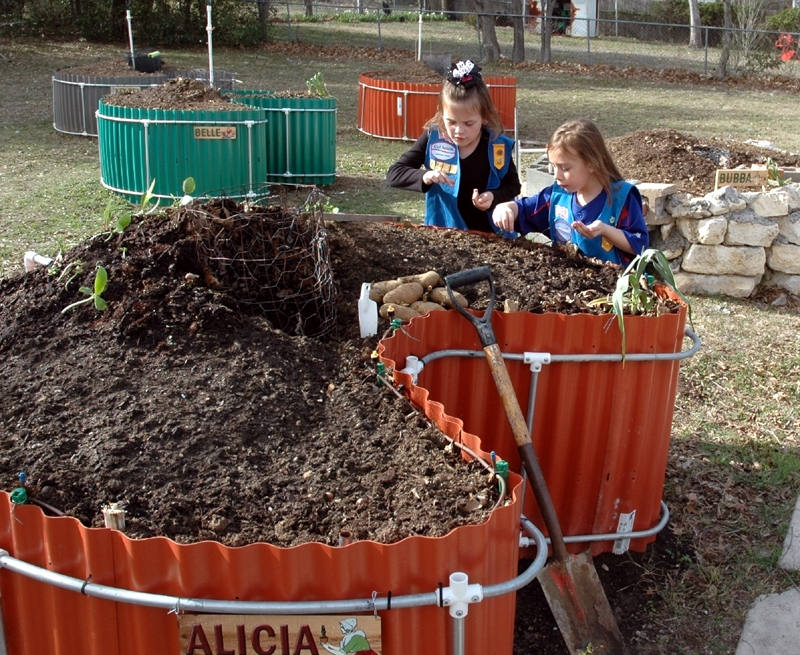 Last week, some local Girl Scouts helped me with planting three of the gardens as part of their Thinking Day project to earn a badge aimed at learning how to provide food to the world. They were very helpful and soon after we started they became just like old farmers. I think they had a great time.
Last week, some local Girl Scouts helped me with planting three of the gardens as part of their Thinking Day project to earn a badge aimed at learning how to provide food to the world. They were very helpful and soon after we started they became just like old farmers. I think they had a great time.
The early spring-like weather has already brought out some early morning bees and some afternoon yellowjackets, plus there have been some cardinals and doves snooping around. My fingers are crossed, though, in hopes that we’ve seen the last freeze.
We’ve said this in previous posts, but it is a fact that keyhole gardens abundantly conserve water, they do away with a lot of the backbreaking work (little to no weeding), and allow seeds to be planted much closer together than traditional ground gardens. They also allow the recycling of tablescraps inside the internal basket and have a unique way of distributing nutrients, producing quality crops. So now is a good time to ride the wave of the future and get into keyhole gardening.
Another advantage is that they are perfect for teaching kids to appreciate gardening. Growing your own crops beats iPods and cell phones hands down. It is a challenge, a way to get back to nature, and the rewards are enormous, with lessons learned sure to last a lifetime.
UPDATE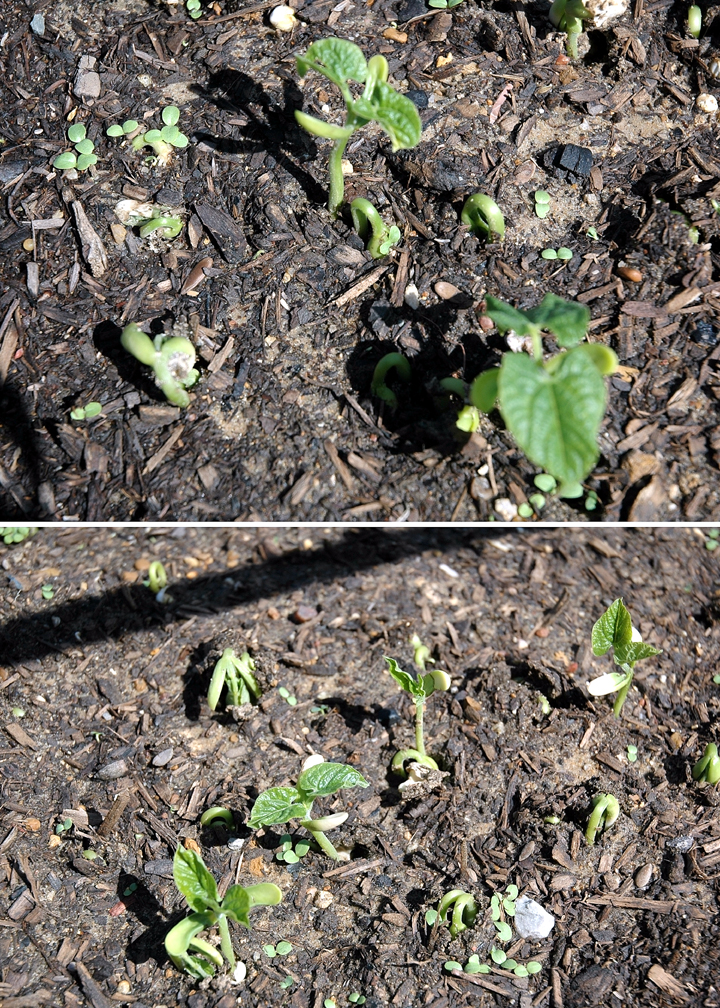
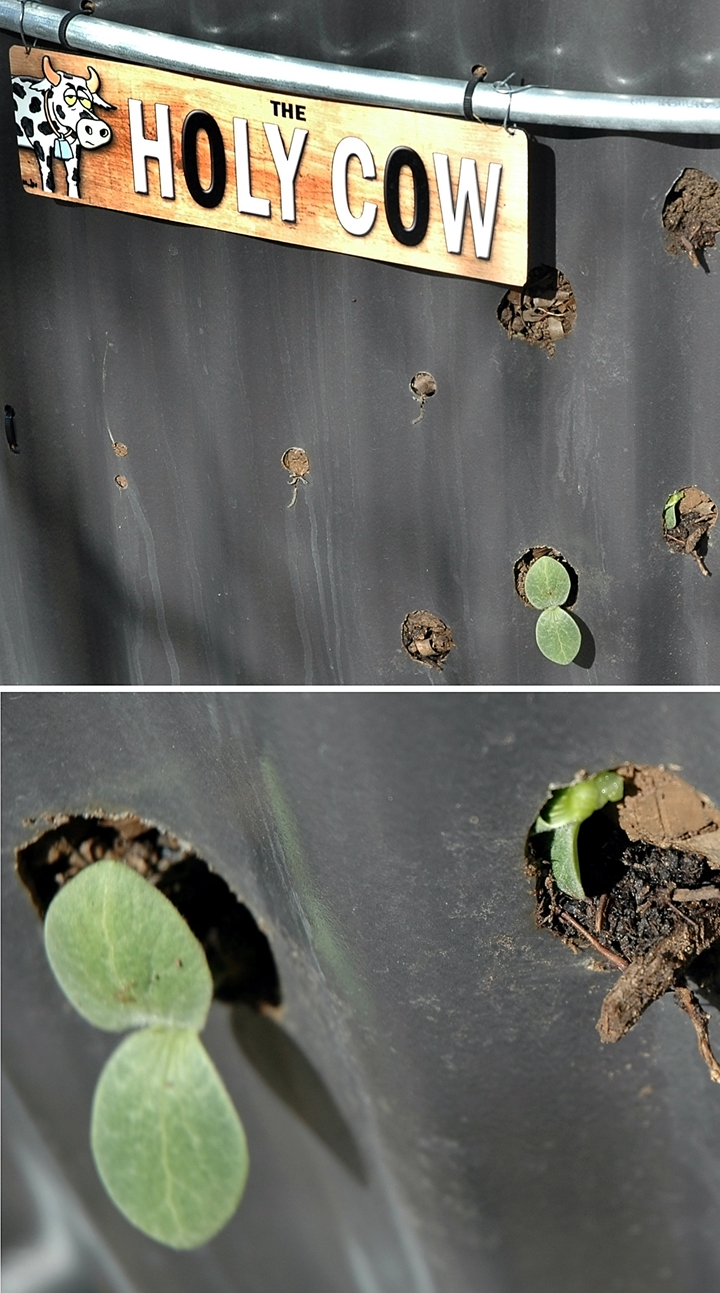 It’s been about a week since planting took place. Mentioned above is the experiment being done with a garden with some holes in the side (keyhole named Holy Cow). Yesterday I noticed some plants trying to come through (pumpkin plants). Here is a photo, click to enlarge.
It’s been about a week since planting took place. Mentioned above is the experiment being done with a garden with some holes in the side (keyhole named Holy Cow). Yesterday I noticed some plants trying to come through (pumpkin plants). Here is a photo, click to enlarge.
Also, generally plants are starting to come up in all of the gardens at the experiment station (additional photo).